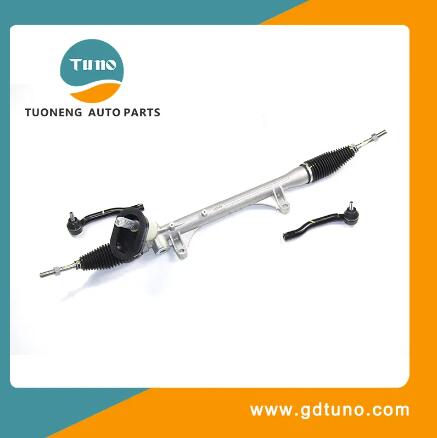Understanding the Basics of an Automobile Steering Rack
2024-09-04
The steering rack is a critical component of a vehicle's steering system. Without it, the precise control over your car's direction would be impossible. In this blog, we'll explore the basics of what a steering rack is, how it works, and why it's essential for safe driving.
What is a Steering Rack?
The steering rack is part of a rack-and-pinion steering system, one of the most common systems used in modern vehicles. It consists of a flat, toothed metal bar (the rack) and a circular gear (the pinion). The steering wheel is connected to the pinion, and when you turn the wheel, the pinion moves the rack side-to-side. This lateral movement is what turns your vehicle's wheels.
How Does It Work?
When you turn the steering wheel, the motion is transferred through the steering column to the pinion gear. The pinion engages with the teeth on the steering rack, converting the rotational movement of the wheel into linear motion. This linear motion pushes the tie rods connected to the rack, which, in turn, moves the wheels left or right.
Types of Steering Racks
1. Manual Steering Rack: In older vehicles, the steering system was entirely mechanical. The driver had to exert more effort to turn the wheel, especially at low speeds.
2. Power Steering Rack: Most modern vehicles are equipped with power steering, where hydraulic or electric systems assist in moving the rack. This makes steering easier and more responsive.
3. Electric Power Steering (EPS): This system uses an electric motor to assist with steering. EPS is becoming increasingly popular due to its efficiency and the fact that it can be easily integrated with other electronic systems, such as lane-keeping assist.
Why is the Steering Rack Important?
The steering rack's primary function is to provide the driver with control over the direction of the vehicle. It needs to be precise, responsive, and reliable, as any malfunction could lead to dangerous driving conditions. Issues like uneven tire wear, wandering steering, or a stiff steering wheel often indicate problems with the steering rack, which should be addressed immediately.
Common Problems and Maintenance Tips
1. Leaking Power Steering Fluid: If you notice a drop in fluid levels or a puddle under your car, it might be a sign of a leaking steering rack.
2. Loose Steering: If your steering feels loose or less responsive, the rack could be worn out.
3. Noisy Steering: Grinding or knocking noises when turning the wheel could indicate damage to the rack or other steering components.
Regular maintenance, including checking the power steering fluid and inspecting the steering system during routine service, can help prevent these issues and ensure a smooth, safe driving experience.
Conclusion
Understanding the basics of the steering rack and its role in your vehicle's steering system is crucial for any driver. By keeping an eye on its performance and addressing issues promptly, you can ensure your car remains safe and responsive on the road.



